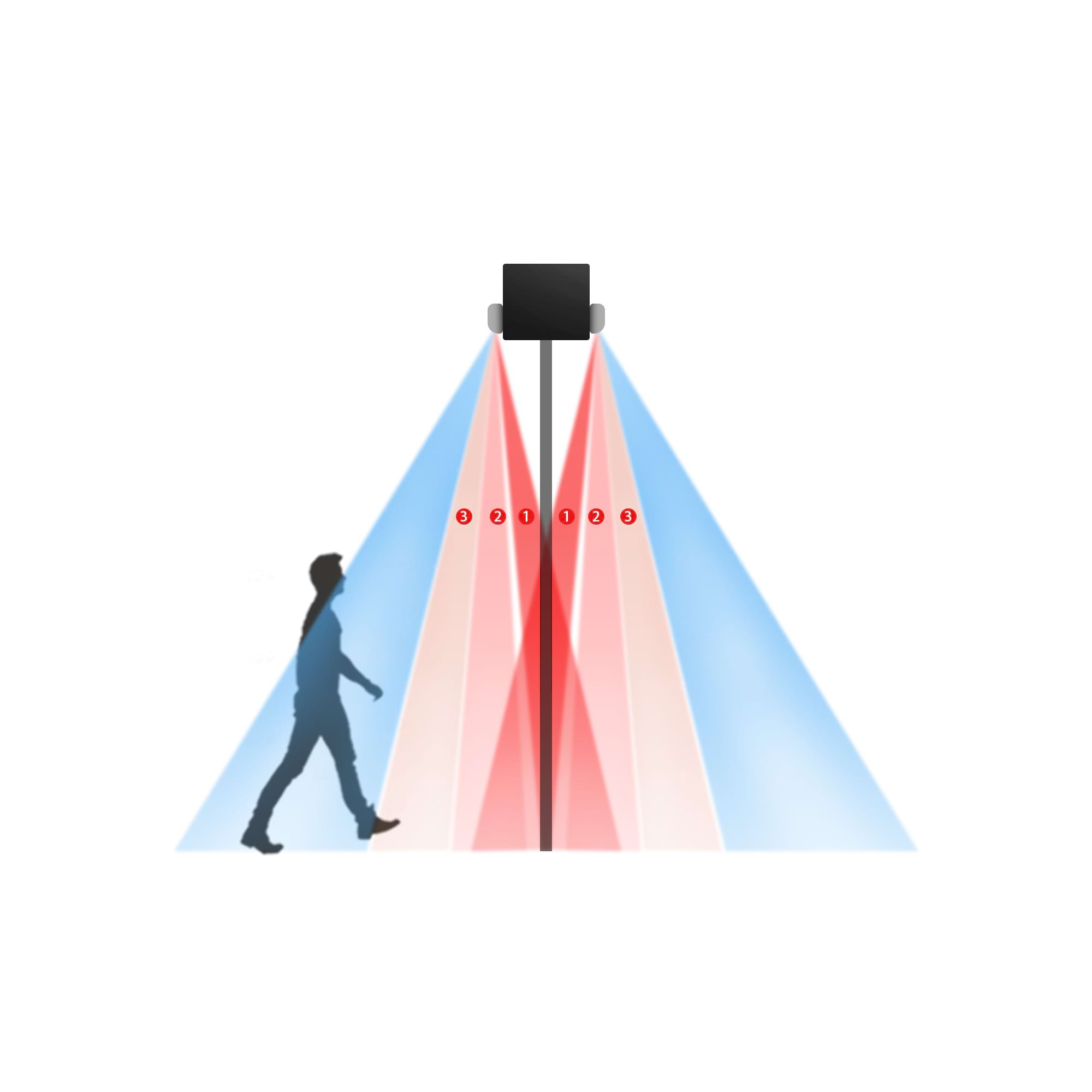Adjustable Features of Automatic Door Sensors: Enhancing Detection Performance and User Experience
Automatic door sensors play a crucial role in automatic door systems by detecting changes in the environment to control the opening and closing of doors. The adjustment features of these sensors are particularly important for ensuring that automatic doors operate efficiently and effectively in various settings. This article explores the adjustable features of automatic door sensors, including their range and angle adjustments, and how these features can simplify the installation and optimize the sensor's performance according to user needs.

1. Basic Functions of Automatic Door Sensors
1.1 Working Principle of Sensors
Automatic door sensors typically use infrared, microwave, or ultrasonic technology to detect changes at the entrance. When the sensor detects an object, it sends a signal to the control system to open or close the door. Proper installation and adjustment of the sensor's position and angle are crucial for accurate detection and effective door operation.
1.2 Importance of Adjustment Features
Adjustment features in sensors are essential due to varying needs across different environments. Users benefit from these features by:
- Improving Detection Accuracy: Ensuring the sensor covers the entire door area and accurately identifies triggering objects.
- Reducing Blind Spots: Precise adjustment of the sensor’s position and angle helps avoid blind spots, enhancing the door's responsiveness.
- Adapting to Environmental Changes: Adjustments allow the sensor to maintain stability and reliability in changing environmental conditions, such as light intensity and temperature variations.
2. Detailed Examination of Sensor Adjustment Features
2.1 Setting the Detection Range
The detection range of a sensor refers to the area it can effectively cover. This involves both the distance the sensor can detect and the overall coverage area. Factors influencing the adjustment of the detection range include:
- Environmental Characteristics: Larger detection ranges may be necessary for spacious entrances or large commercial areas, while smaller ranges may suffice for smaller doorways or narrow corridors.
- Sensor Type: Different types of sensors (infrared, microwave, ultrasonic) offer varying detection ranges, and users must choose appropriate adjustment methods based on the sensor’s specifications.
- Device Requirements: Sensors need to function optimally in different usage scenarios, such as high-traffic or low-traffic areas, making range adjustment critical for device performance.
2.2 Implementing Angle Adjustments
Angle adjustment allows users to modify the sensor's detection angle to optimize performance. This typically involves:
- Horizontal Angle: Adjusting the horizontal angle changes the sensor’s coverage area along the width of the entrance. Proper adjustment ensures the sensor covers the entire door width.
- Vertical Angle: Adjusting the vertical angle affects the sensor’s coverage height. For tall doorways, vertical adjustments ensure the sensor can detect objects at various heights.
2.3 Ease of Adjustment
To ensure users can easily adjust the sensor settings, automatic door sensors often include:
- Markers and Scales: Sensors come with markers and scales to facilitate precise angle and range adjustments.
- Adjustable Brackets: Many sensors feature adjustable brackets that allow users to easily change the sensor's mounting angle and position.
- User Manual: Detailed user manuals and adjustment guides help users understand how to properly set up and adjust the sensor.
3. Steps for Implementing Adjustment Features
3.1 Initial Installation and Setup
Before adjusting the sensor, it must be initially installed. The steps include:
- Choosing the Installation Location: Select a suitable location based on the door size and environment. Typically, sensors are installed above or beside the entrance for optimal coverage.
- Securing the Sensor: Use provided brackets or mounting fixtures to securely install the sensor in the chosen position.
3.2 Adjusting Range and Angle
After initial installation, proceed with adjusting the sensor's range and angle. Steps include:
- Adjusting Horizontal Angle: Set the sensor’s horizontal angle to ensure coverage of the entire doorway. Use scale markings for precise adjustments.
- Adjusting Vertical Angle: Set the vertical angle based on the doorway height to accommodate different object heights. Ensure the sensor covers all necessary vertical areas.
- Testing and Calibration: After adjustments, test the sensor to ensure it accurately detects objects and triggers the door correctly. Make any necessary fine-tuning based on test results.
3.3 Ongoing Maintenance and Adjustments
Post-installation, regular maintenance and adjustments are necessary to ensure continued performance. Maintenance tasks include:
- Cleaning the Sensor: Regularly clean the sensor surface to prevent dust or dirt from obstructing its detection capabilities.
- Checking Angle and Range: Periodically check the sensor’s angle and range settings to ensure they still meet operational needs. Adjust as needed based on environmental changes.
- Monitoring Performance: Observe the door’s performance to ensure the sensor is effectively detecting objects and make adjustments based on actual usage.
4. Customer Considerations for Adjustment Features
4.1 Ease of Use and Operation
Customers prefer sensors with user-friendly adjustment features that do not require complex tools or specialized knowledge. Simple and intuitive adjustment mechanisms enhance the overall user experience.
4.2 Flexibility and Adaptability
Customers value sensors with flexible adjustment features that can adapt to different environments and usage scenarios. The ability to adjust the sensor’s range and angle ensures it can meet varying detection requirements.
4.3 Performance Optimization
Adjustment features help optimize the sensor’s performance by improving detection accuracy, reducing blind spots, and maintaining efficient operation in diverse conditions. Customers seek sensors that enhance performance through effective adjustment capabilities.
5. Conclusion
The adjustable features of automatic door sensors are crucial for ensuring efficient operation and user satisfaction. By allowing for adjustments in range and angle, these features help optimize the sensor's performance, ensuring the automatic door operates effectively in various environments. The ability to fine-tune the sensor enhances detection accuracy, reduces blind spots, and adapts to changing conditions.
Overall, the adjustment capabilities of automatic door sensors are essential for improving user experience, device performance, and long-term operational stability. As technology continues to advance and customer needs evolve, future sensor adjustment features will likely become more intelligent and user-friendly, further meeting the diverse demands of various applications.







